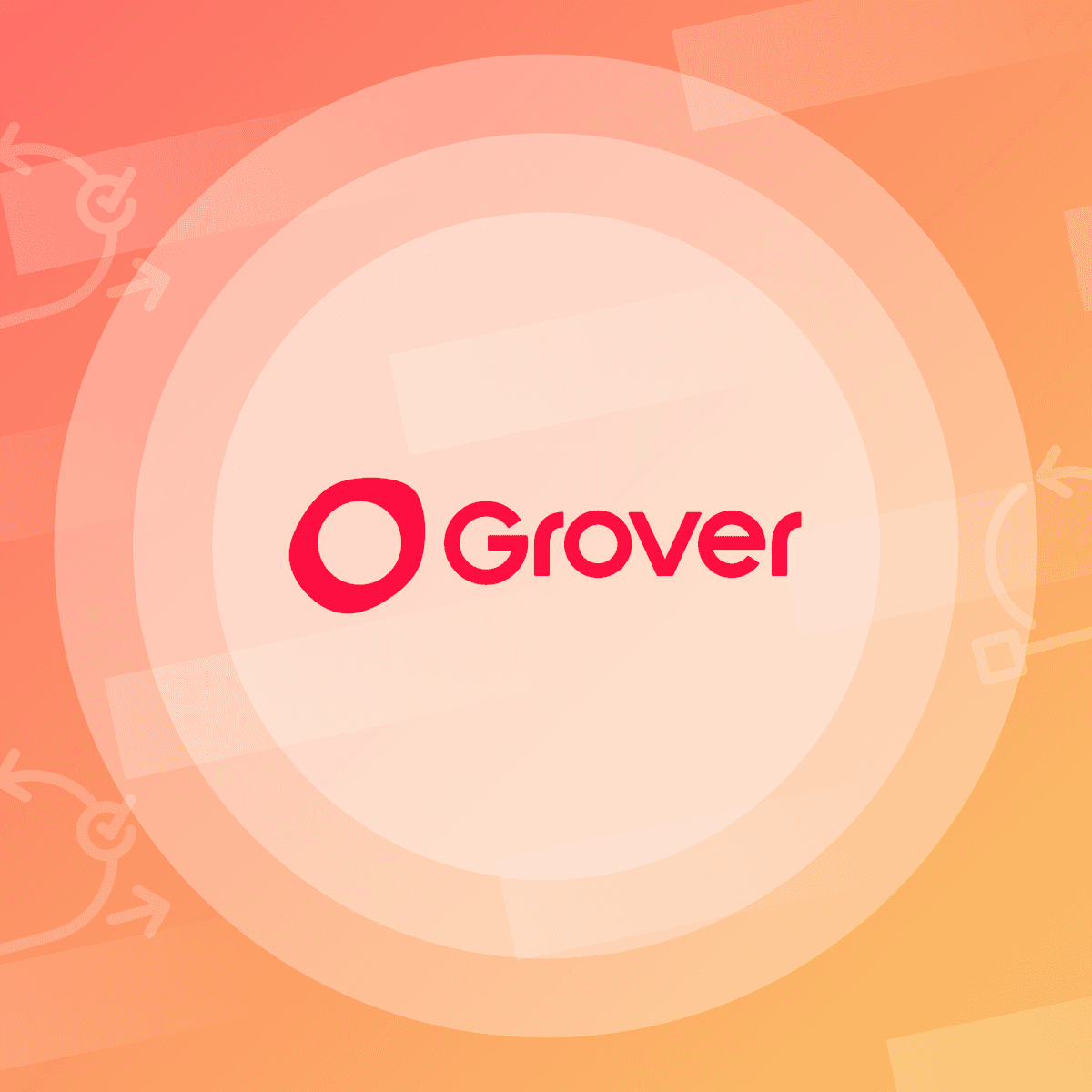How Grover Optimizes for Agile Collaboration and Sustainable Customer Engagement Using Braze
Published on June 02, 2021/Last edited on June 02, 2021/6 min read


Sunny Manivannan
VP & GM, Global SMB, BrazeFounded in 2015, European B2B and B2C technology rental startup Grover has helped its 100,000 active customers try out the latest in computers, wearables, phones, and more—for a fraction of the cost of paying for new items in full.
I spoke with Karan Gupta, Head of Retention at Grover, to learn how he and his colleagues across business intelligence (BI), branding, and product leverage the Braze platform's customer engagement, cross-channel messaging, and campaign optimization capabilities to drive activation from sign up to first rental and, ultimately, deliver long-term subscriber value.
He shared why he and his company added Braze to its customer engagement technology stack, how Grover uses Braze in tandem with other technologies within the stack, and how evolving beyond a traditional CRM has enabled the company to collaborate and optimize campaigns more effectively while closing the gap between acquisition and engagement.*
*This conversion has been edited for length and clarity.
You've been a Braze customer for over a year. What made you decide to try out our customer engagement capabilities?
One of the first things that I pushed for when I got to Grover was to evolve the company's CRM. A lot of people around the world view CRMs as a way to send newsletters to everyone. I find with most companies, CRM is considered in one of two ways. One, is as a support channel for growth—to drive acquisition. But I've always seen it as a way to start engaging customers in a much more meaningful way, so that we drive long-term retention and, of course, put the focus on activation and different retention metrics along the way. And that thinking inspired my journey towards moving to a tool like Braze.
What advice do you have for effective customer engagement collaboration with other teams?
What I've noticed is—especially when there are different teams and different functions involved—it's very difficult to manage priorities without context. Defining that context is super critical. That context should come from data, to ensure that people understand the rationale behind why we're doing certain things and also not doing others. It seems like a very small thing, but the more you provide context, the more data you provide in your discussions, the better it is for collaboration.
Can you walk us through your campaign process, from conceptualizing to building and executing to finally analyzing and optimizing?
Sure, let's use an example of one of the challenges that we have as a company—which is common in a lot of eCommerce and SaaS models. When it comes to running acquisition campaigns, you'll find you'll get a lot of traffic—a lot of people will sign up for your product or your service, but then they do not become activated. They don't get started using your service. I would say roughly 60% of our registered customers have never rented a single product, so our activation rate is a big challenge.
What we've started doing as the first step, even before we begin creating a campaign, is really understanding those behaviors. We use Amplitude—I love how it works with Braze—which tells us the behaviors that people exhibit when they create an account and they submit an order, that is the action that we want to drive.
For example, let's say we want people to add a product to their cart within the first 30 minutes of creating an account. This would define our next flow, our welcome journeys, our cart abandonment campaign. We can then identify users that don't take an action and run a new campaign.
Once we identify the behavior that we want to drive, that becomes part of a brief for the brand team and they'll come up with a concept. We identify the channels we want to run the campaign on, whether it's email or it's cross-channel, using push notifications, in-app, and so on. And simultaneously we use another Braze Alloys partner for email templates, Dyspatch. Then we identify what Content Blocks we need to add.
Once the campaign goes live, we always test some variables against a control group. We always have multiple variants running at the same time, and with Braze we are able to measure campaign performance along the way. Sometimes we learn that a given campaign is actually having a negative impact on conversions. So in that case, we pull back on that campaign.
Can you share some examples of how Braze has enabled you to be more agile and efficient?
We have lean teams. We have a lean BI team. We have a lean product team. Anything that lets me remove dependencies from either of these two teams is great. Email was our first core channel, and it still is—and, before Braze, any time we wanted to know how customers were engaging with emails and how it was impacting our core retention metrics, [it] was just impossible to see.
That was the biggest win straight off the bat when we started using Braze. Now we could see those metrics directly with Braze. And now we export our data to Amplitude and any time we want to further optimize our lifecycle programs, it's super easy for us to use that data from Braze. If that was not an option, we would struggle to make meaningful assessments of the campaigns that we are running.
Are there any specific Braze features that you really love?
My favorite Braze feature is multivariate testing. We run multiple experiments every day. We test different hypotheses to get an understanding of why certain things are not working and why we should not be doing certain things, and it gives us the information we need to convince different teams to prioritize certain initiatives and move toward enhanced personalization and dynamic targeting.
Final Thoughts
Hundreds of innovative small and growing companies are using Braze to disrupt their categories and achieve success within their industries. See for yourself why Braze is the secret weapon startups turn to to gain a competitive advantage, engage thoughtfully with their users, and ultimately drive business outcomes like user growth, conversions, revenue, retention, and more.
Interested in hearing more from Karan Gupta on how Grover uses Braze? Check out our “Data-Driven Customer Engagement (Without the Headaches)” webinar for his insights on how brands can effectively leverage the Braze platform’s reporting and analytics capabilities.
Related Tags
Be Absolutely Engaging.™
Sign up for regular updates from Braze.
Related Content
View the Blog
How AI Decisioning Transforms Marketing (A Complete Guide)

Team Braze

AI decisioning cheat sheet: How to crawl/walk/run with BrazeAI Decisioning Studioᵀᴹ

Team Braze

A day in the life of a data scientist on the BrazeAIᵀᴹ forward-deployed engineering team
